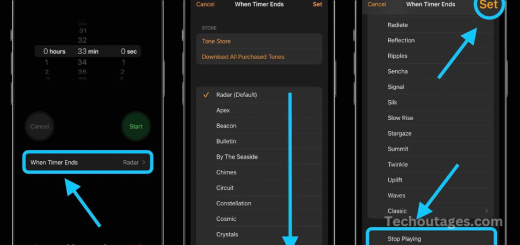Apple Skipping Ipad 11 Apple Intelligence
Apple recently unveiled an updated iPad mini, which now features the A17 Pro chip and enhanced Apple Intelligence support. However, in a move that surprised many, the company made no mention of a refresh for the base model iPad, despite previous expectations. The current entry-level iPad, which was last updated over two years ago, remains unchanged, leading to questions about Apple’s decision to leave it behind in its lineup. The absence of an update for the base model is particularly puzzling, given the rapid pace of innovation seen in the company’s other product categories.
Base iPad history
Apple first introduced what we now know as the entry-level iPad in 2017. While the current model is the 10th generation, the product line’s budget-friendly ethos dates back to the 5th generation. After the launch of the iPad Air in 2013, the iPad 4 was eventually discontinued, creating a notable gap in Apple’s iPad lineup.
With the release of the iPad (5th generation), Apple aimed to create a device accessible to a wider audience, particularly in the education sector. The goal was clear: to deliver a no-frills, essential iPad. This model excluded advanced features like the latest chipset, a laminated display, and Apple Pencil support. It also had a modest 32GB of storage. Priced at $329, it offered solid value for its target market.
Subsequent annual updates refined the iPad’s capabilities. The 6th generation introduced Apple Pencil support and a more powerful chip, while the 7th generation added a larger display. The 8th generation featured an upgraded chip and fast charging, and the 9th generation brought even more storage, a faster processor, and a center-stage camera.
The most significant update came with the 10th generation, released a year after the 9th. This refresh introduced a complete redesign, incorporating modern iPad aesthetics, a range of vibrant colors, and the shift to USB-C. However, despite the redesign, it maintained the fundamental formula that defined earlier models—an older chipset, a non-laminated display, and no support for the second-generation Apple Pencil. The iPad 10 still relied on the first-generation Apple Pencil. Still, users had to use a cumbersome adapter, as the Pencil 1’s Lightning connector was incompatible with the iPad’s new USB-C port.
Despite its modernized design, the 10th generation iPad continued to cater to budget-conscious users while lacking some of the more premium features found in Apple’s higher-end models.
The iPad 11’s Unmet Expectations
For months, analysts, tech enthusiasts, and consumers alike had speculated that Apple would unveil an iPad 11 at some point in 2023. After all, the iPad lineup had been refreshed regularly over the past several years, and with Apple Intelligence becoming a key feature in other devices like the iPhone 15 and the iPad mini, expectations were high that the entry-level iPad would follow suit.
However, Apple’s decision to not update the iPad 11 is somewhat perplexing. The iPad 10, while a notable step forward in terms of design with its modern look, USB-C port, and larger screen, still has several shortcomings. It retains the older A14 Bionic chip, lacks support for the Apple Pencil 2, and features a non-laminated display. These factors leave it feeling less refined compared to its higher-end counterparts, which have received more cutting-edge features, including the A16 and A17 chips, ProMotion displays, and improved camera systems.
May you also like it:
How To Type The Apple Logo On Iphone, Ipad, And Mac
How to Trade in Your AirPods — Complete Guide
Apple Watch Series 7: Release date, Features and more
Apple Watch: How To See Calories Burned Active
The Shift Toward Apple Intelligence
One of the standout features of Apple’s recent hardware updates has been the integration of Apple Intelligence—the company’s suite of AI-driven features that include smarter processing, image recognition, and enhanced machine learning capabilities. Apple’s use of the A17 Pro chip in the iPad mini highlighted the potential of this intelligence, enabling features like real-time video editing, improved multitasking, and advanced predictive capabilities that extend the functionality of the device.
However, the absence of these features in the iPad 10 suggests a possible strategy shift by Apple. The company may have opted to focus on other devices, including the iPad mini and the iPad Pro, for the rollout of Apple Intelligence. By focusing on higher-end models first, Apple can showcase the benefits of its new technology and refine its AI systems before rolling them out across its broader tablet range. This move aligns with Apple’s history of reserving its most advanced features for its premium models, gradually bringing them down to more affordable devices as they mature.
Moreover, Apple’s shift towards advanced AI features like Apple Vision and machine learning likely means that the company needs more time to ensure that these capabilities work seamlessly across all iPads. A refresh of the iPad 10, with its older chipset, might not be the ideal platform to showcase the full potential of these technologies.
The Problem of Differentiation
Another reason for the delay of the iPad 11 might be the increasing overlap between the iPad models. Apple has a sprawling tablet lineup that includes the iPad mini, the iPad 10, the iPad Air, and the iPad Pro. Each device serves a different purpose, but the distinctions between them are becoming more nuanced.
With the iPad mini now featuring the A17 Pro chip and Apple Intelligence and the iPad Pro already boasting the M2 chip and a host of premium features, the iPad 10 occupies a tricky position. It’s meant to be affordable and accessible, but it also competes with devices that offer much more in terms of performance and features. An iPad 11 update with Apple Intelligence might have blurred the lines even further, pushing the iPad 10 into territory that Apple perhaps wants to keep reserved for its higher-end models.
Apple may also be choosing to hold off on the iPad 11 to avoid cannibalizing sales of the iPad Air or iPad Pro. If the entry-level iPad were to receive a significant upgrade, it could pull attention and sales away from the more expensive tablets. Given Apple’s careful approach to maintaining clear distinctions between its devices, the company may have opted to delay the update to maintain the integrity of its product tiers.
Looking Ahead: What to Expect for the iPad 11
Though Apple has skipped the iPad 11, that doesn’t mean an update is out of the question altogether. Apple may simply be waiting for the right moment to refresh the iPad 10, potentially with the inclusion of a more powerful chip, a laminated display, and support for the second-generation Apple Pencil. This would bring the device closer in line with the updated features available in other iPads, while still maintaining its affordable price point.
The integration of Apple Intelligence into this model could also be a key factor in its eventual refresh. Apple could be preparing to launch a more comprehensive AI-powered experience for the iPad 10, but this might require more time to fully develop and implement across the product line.
Alternatively, Apple could be saving the next big iPad refresh for a major event, possibly launching the iPad 11 with cutting-edge AI features, a new design, and a more powerful chipset that aligns with the capabilities of the iPad mini and iPad Pro.
Frequently Asked Questions
Why did Apple skip the iPad 11 update?
Apple’s decision to skip the iPad 11 may be a strategic move, allowing time to refine Apple Intelligence. The company might focus on higher-end models first before introducing these features to the iPad 10.
What is Apple Intelligence, and why does it matter for the iPad?
Apple Intelligence is Apple’s suite of AI and machine learning technologies that enhance device functionality. On the iPad, this could enable advanced features like real-time image recognition and smarter multitasking.
Could the iPad 10 receive Apple Intelligence in a future update?
Apple may introduce Apple Intelligence to the iPad 10 in a later update. However, the current A14 Bionic chip might need to be upgraded to fully support these advanced features.
Does skipping the iPad 11 mean Apple is abandoning the entry-level iPad?
No, skipping the iPad 11 does not indicate that Apple is abandoning the entry-level iPad. The iPad 10 remains an essential product in Apple’s affordable tablet lineup.
How does the iPad 10 compare to other iPad models in terms of features?
The iPad 10 offers a modern design, USB-C, and a large display but lacks premium features like a laminated screen or Apple Pencil 2 support. It’s positioned as a more affordable alternative to the iPad Air and iPad Pro.
What could an iPad 11 update look like?
The iPad 11 would likely include a more powerful chip, a laminated display, and support for the second-generation Apple Pencil. It could also introduce Apple Intelligence for enhanced features and performance.
Will Apple release an iPad 11 with a new design?
It’s unlikely that the iPad 11 will feature a completely new design, as the iPad 10 already boasts a modern look. The next update will probably refine the internals rather than change the design drastically.
Will skipping the iPad 11 affect the overall iPad lineup?
Skipping the iPad 11 won’t significantly impact the iPad lineup. The iPad Air and iPad Pro will remain the top choices for premium features, while the iPad 10 continues to serve budget-conscious consumers.
Conclusion
Apple’s decision to skip the iPad 11 update appears to be a calculated move rather than an oversight. By focusing on refining its Apple Intelligence technology and rolling it out to higher-end models first, Apple is ensuring that its advanced AI features reach their full potential before expanding to more affordable devices like the iPad 10. This delay also allows Apple to maintain clear differentiation across its iPad lineup, preserving the premium nature of the iPad Air and iPad Pro. While the absence of an iPad 11 may leave some users eager for an upgrade, the next refresh will likely bring significant improvements, making the wait worthwhile for those seeking a more advanced, AI-powered experience at a budget-friendly price.



